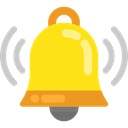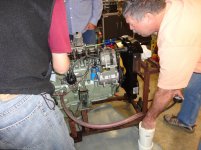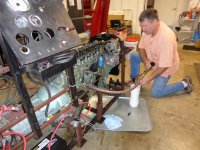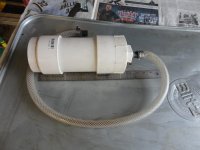If you're doing new cams/lifters, then spinning it over with the coil unplugged (or whatever your method of preventing ignition) until you generate oil pressure on the gauge is a no-no.
Assuming all steps are a go; the timing's close, distributor in right, carbs set rich, choke functioning, etc., then fire it up and get the revs up around 2000 - 2100 quickly and hold it there for 15 - 20 minutes. You should see oil pressure almost immediately (I would, before I put it much over 1200 RPM...) and while one (1) person monitors the tach and holds the revs, another should scrutinize every joint looking for leaks and other undesireable things, like steam. Cooling system needs to be complete, including a fan (either engine mounted, 12VDC auxiliary, or a garage "box" fan) as a new, tight engine will get hot pretty quick.
While it's always good fun to listen to an engine on open headers, it's a lot easier to hear "funny noises" if the full system is fitted.
I suppose everybody has their own methods, so you can take little kernals of information and create what works best in your own case. I'm sure I've built well over a hundred (>100) engines, and I don't ever remember getting a phone call about one coming apart...


 Hi Guest!
Hi Guest!

 smilie in place of the real @
smilie in place of the real @
 Pretty Please - add it to our Events forum(s) and add to the calendar! >>
Pretty Please - add it to our Events forum(s) and add to the calendar! >> 




 when the front suspension collapsed. - ouch.
when the front suspension collapsed. - ouch.